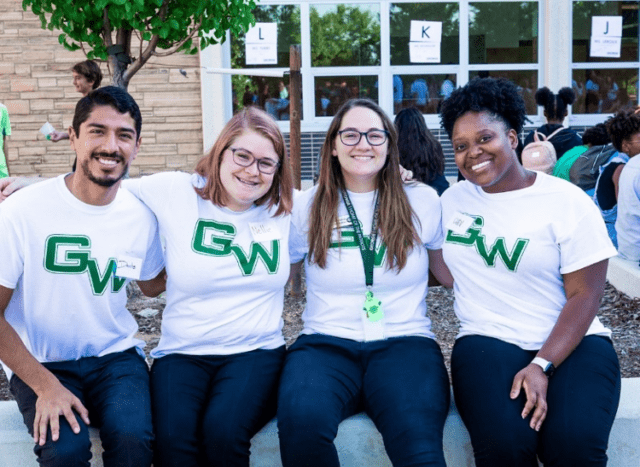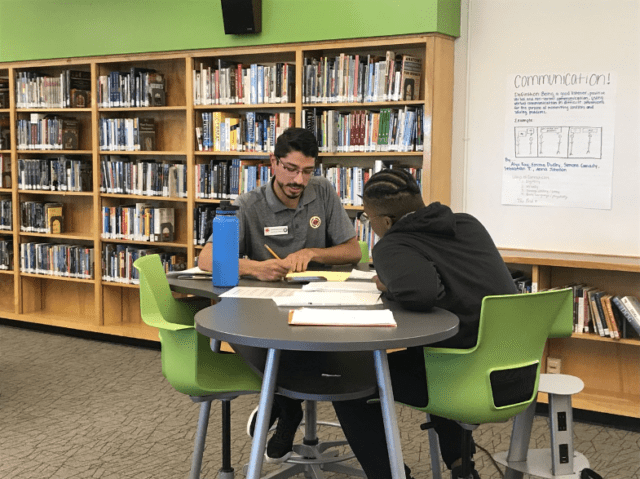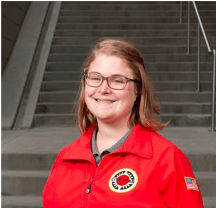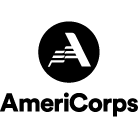Building new partnerships in a school
Everything has changed with COVID-19, including our work at City Year. Learn more about what City Year’s virtual service and distance learning look like now in cities across the U.S. “Service might look different, but it’s still happening.”
Building a new school partnership
I love a system. A major reason why I was drawn to City Year was because of its built-in structure and culture. If you talk with a friend who has served, or check out City Year’s blog and website, you gain a sense of what service will be like. Basic training in the summer; lots of team building with the AmeriCorps members who are serving with you in a particular public school; cultural elements like the uniform, morning circle and City Year’s core values. The thought of being part of those traditions really appealed to me.
But my expectations about City Year didn’t include the joys and challenges of establishing a partnership with a school that was brand-new to our site.
This school year, City Year Denver added two new high school partnerships: John F. Kennedy High School and George Washington High School (GW), where I was placed. Our team was tasked with establishing City Year culture at GW and creating a place for ourselves. When I say “creating a place” I mean that symbolically and physically, as we had to completely reorganize and decorate our new team room. As soon as we finished Basic Training Academy last summer, there was a lot to figure out as students returned to school.
What we quickly realized was that building a new partnership came with unique challenges, as no one in the school knew quite what to expect from the partnership to City Year. I would compare the feeling to breaking in new roller skates while you’re also learning how to use them. We ran into miscommunications and missteps as we created definitions and boundaries around our roles and figured out how to troubleshoot issues as they arose.
In my early planning meetings with partner teachers, we all scratched our heads as we brainstormed the logistics of having an extra adult—a City Year AmeriCorps member—in their classroom. None of them had worked with a program like City Year before and this was my first time serving in a traditional classroom setup. The freedom was exciting, but the lack of clarity was frustrating for someone who works like I do—with a clear structure.
Overall, I would say that City Year was extremely lucky in establishing our new partnership at GW. There are a few factors that I believe made us especially successful in a start-up environment.

A small but mighty team
With only four of us, our team was smaller than the typical City Year team of eight to 10 AmeriCorps members in a school. We had to quickly establish a united front and build trusting relationships with each other. Thanks to the careful placement process overseen by City Year staff, we immediately realized that our team was a great balance of personalities and work styles. It has been easy for us to get to know each other on a personal and professional level. We can casually check in with each other during off periods and there is never an issue of knowing how the “whole team” is feeling – we always have a finger on the collective pulse.
School support and autonomy
While communicating with us consistently and checking in with us about our needs, the administration at GW took a relatively hands-off approach in terms of what they expected of us beyond the basic deliverables of helping to improve student attendance, social-emotional skills, and math and literacy performance. I believe this level of trust was vital for our success. We shared with them the services we could provide: in classroom support so teachers could more easily differentiate instruction; small-group and one-on-one tutoring for students; and the time to administer tools that help us track student growth and engagement, such as the Holistic Student Assessment, or HSA.
While we supported elsewhere when possible, such as providing assistance during PSATs and volunteering at school dances, the entire staff at GW respected our time and understood our main priorities. They have also been understanding and accommodating for our specific City Year needs, like when we need to use students’ advisory periods for check-ins with individual students we are tutoring and coaching.

Space
I don’t think it can be understated how helpful it was to be given a large, accessible workspace to begin our partnership. Our team room where we gather every day and tutor students is a spacious office connected directly to the library. Each AmeriCorps member has a desk and working area to bring our students for one-on-ones. We also have enough room to create a conference workspace for small-group pull-outs so as to not need a separate classroom. The City Year Room is now a well-known part of the school landscape and is popular with students.
After months of meetings, brainstorm sessions, failures and successes, we established what City Year would look like at our new school: how we’re expected to engage in the classroom, how we schedule our small-group pull-outs, how we conduct “Extended Learning Time,” which is afterschool tutoring, how we host school-wide events, and how to somehow reteach ourselves high school biology and economics so we can help our students.
A sense of ownership
Every new City Year-school partnership is different. Still, I believe there are universal lessons to be gleaned about what AmeriCorps members can influence as they develop a relationship with a new school.
Firstly, at the start of a partnership, AmeriCorps members should take ownership of the fact that they are setting the tone for what City Year will look like at that school in the future. Be as imaginative and fearless as you can be. And speak with authority even if you aren’t feeling entirely confident, because you likely know more than you think you do.
Secondly, City Year asks you to be flexible and adaptable, but when things feel confusing at times, be patient with yourself and be proactive in finding answers. It ultimately took me months with my partner teachers before we all really understood what City Year would look like in their classrooms. At first, I was frustrated with myself for not finding my role sooner, but I needed to remember that I was, in a way, building my role from scratch – it’s easier said than done!
Finally, stay the course and believe in the long-term payoff. On our first day of doing Morning Greeting, we had more confused looks than smiles, as many students had never been at a school with a City Year presence and had certainly not experienced us in high school. It was disheartening to not get that instant City Year adoration we had heard so much about. But as we got to know students, and as City Year became a trusted presence throughout the school, those confused looks turned into waves, nods and perhaps the occasional smile—it is still a high school, after all.
As if there weren’t enough adjustments this year, of course we’re facing a brand-new type of uncertainty with the COVID crisis. Fortunately, our team’s knack for flexibility has served us well. Our AmeriCorps members working with the math department have been using programs like Zoom and Khan Academy to support their partner teachers. Meanwhile, the two of us in the English department are getting creative, reaching out to students individually and focusing on increasing engagement in these uncertain times. We’ve tackled everything from learning how to develop remote one-on-one meeting spaces to figuring out how to get a student access to a computer. From the get-go, we knew this year at GW would be a wild ride, so sometimes this just feels like one more hurdle to jump over as we move through the year.
Faced with the question “What exactly will City Year look like at our school?” I hope future AmeriCorps members can answer with less fear and more excitement. The answer is what you make of it, and if my team’s experience is any indication, you can in fact make a lot out of nothing.
Interested in learning more about service or partnership with City Year AmeriCorps?
 Nellie Vinograd serves with City Year Denver at George Washington High School. She plans to return to City Year as a member of City Year Philadelphia’s Civic Engagement team for the 2020-2021 school year. She is originally from Maryland and attended Guilford College in North Carolina, where she studied English and sociology.
Nellie Vinograd serves with City Year Denver at George Washington High School. She plans to return to City Year as a member of City Year Philadelphia’s Civic Engagement team for the 2020-2021 school year. She is originally from Maryland and attended Guilford College in North Carolina, where she studied English and sociology.
Related stories
We hear time and time again from corps members and alums that when they first joined City Year as an...
Read more about A snapshot of City Year service as a student success coachAs a new City Year AmeriCorps member, you’re about to embark on a transformative journey—and it all begins with Basic...
Read more about Welcome to City Year’s Basic Training Academy: Your First Step Toward ImpactHow do you make your application stand out? Check out these tips from our recruitment staff
Read more about Tips and tricks for a great applicationCity Year Providence AmeriCorps alumnus Justin Roias knows firsthand how positive relationships with caring adults can help children succeed as...
Read more about Mentoring students: a two-way street














